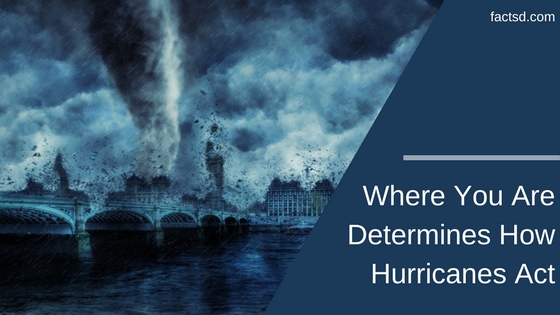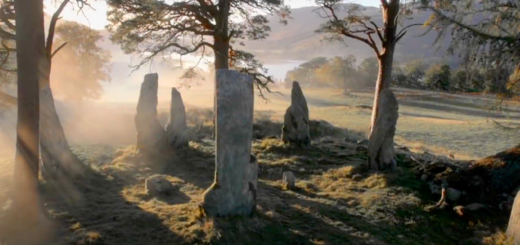10 Hurricane Facts and Tips To Keep You Safe
Hurricanes and tropical storms are a force to be reckoned with. If a storm is approaching you, consider these hurricane facts and survival tips to bring you peace of mind as you brace for the arrival of this natural phenomenon.
Indeed, the eye of a hurricane is quiet—for just a moment.
While this particular hurricane fact is true, all too often, the development and behavior of these massive superstorms aren’t well known by the general populace.
In America, only a fraction of the continental states ever needs to deal with hurricanes. That can easily mean ignorance and a misunderstanding of the way these storms work can result in avoidable damage to your home, or worse.
While predicting the path of a hurricane is never easy, there are lots of things we know about the storms that can keep you and your family safe during an emergency or during a rapidly building storm.
We sincerely hope you never find yourself in such a situation, but if you know of a rapidly approaching storm, we’ve got ten hurricane facts that could be useful in any time of need. Five of which relate to how storms form—and the other five on how to weather them.
But before that, watch this video to learn about safety precautions during a hurricane:
1. The Equator Forms The Storms
One of the biggest reasons few states in the Union are affected by storms has a lot to do with the process that creates them.
Hurricanes need warm water to develop and to create that signature rotation around a singular point. At or near the equator, warm water that rises naturally to form clouds is affected by the rotation of the earth as it begins to move.
This shift away from the equator ‘spins’ the storm, and if enough warm water feeds into the system, the spinning will solidify, and a hurricane will be born. That’s why areas closer inland or near the North or South Pole find themselves rarely affected by this natural phenomenon.
2. There Are More Hurricanes Than You Think
On land, we hear about the massive and deadly storms that rock our coast and flood our streets—but not every hurricane is destined for a life of destruction.
Due to the serendipitous nature of their formation, hurricanes are quickly created by nature of the planet’s shape and thus are released at random from many parts of the world. As such, many of these forms point themselves towards other locations at sea and die off once the warm air and water cease to fuel them.
Likewise, any storm pointed directly towards land can be moved and diverted by weather patterns, cold fronts, or even naturally—as a hurricane simply flows towards the warm water and can shift gears at any point.
That means that for every hurricane that hits land, there are five or more than form, travel, and dissipate without interfering with any human activity.
3. Where You Are Determines How They Act
Much like how water naturally rotates in a direction concurrent to the hemisphere of the earth, hurricanes travel and rotate in a direction dependent upon where they’ve formed.
Most hurricanes, as we previously established, form along the equator. However, this means that they can either ‘fall off’ into the northern or southern hemisphere. If these end up traveling northward, they will rotate counterclockwise. In the southern hemisphere, hurricanes spin in a clockwise direction.
This directional change is more than trivial. The rotation of the storm gives it a natural ‘curve’ in its trajectory that can be difficult to predict. If a storm ended up rotating counter to its natural direction, any prediction would be nearly worthless.
4. Hurricanes Aren’t Just Hurricanes
5. How The Naming System Works
If you’ve ever wondered why storms have the names you hear on the television, the reasoning behind this choice is somewhat specific.
The National Weather Service North delegates Atlantic hurricane names each year. This organization, alongside tracking and studying these storms and other natural phenomena, keeps and maintains lists of alphabetical names.
The system gives a name in alphabetical order once a storm is strong enough and considered a hurricane (or tropical storm).
Since the National Weather Service only keeps a certain number of lists each year, you may begin to notice names beginning to repeat themselves.
For particularly deadly storms in the national dialogue, such as Hurricane Katrina, the National Weather Service ‘retires’ a name and no longer will use the name moving forward.
The National Weather Service’s website contains a complete list of names of a season as well as a list of retired names.
6. Storm Evacuation
Now that we’ve gone over hurricane facts and a few ways we know hurricanes form and develop, we’ll shift gears into how to prepare if a storm is going your way.
When preparing for a hurricane, the best course of action is to listen to local radio and television broadcasts. It is important to determine whether or not it is safe to remain in the area.
The National Weather Service delegated and listed different areas near the ocean that need to evacuate in a certain order. If you’ve lived near a coastline of interest, you may have already seen signs designating your zone or signs pointing towards the evacuation route.
In the interest of public safety, the National Weather Service only issues evacuation orders when necessary for survival. For a hurricane, forecasters warn us several days in advance compared to a tornado when they can forecast it no more than 15 to 30 minutes.
7. Securing Your Things
Whether or not you choose to remain, securing your home and property is the next necessary step.
Also, waiting out the storm should take place in the innermost room of your home. Preferably, with emergency medical kits at the ready.
You will find exhaustive sources of survival and safety information online. Thus, find as much information as you can while the Internet still works.
8. Wait and Listen
Hurricanes blow large sheets of sideways water onto property and land, so these should be audible dependent upon your home. If you find yourself in the center of the hurricane’s path, you may uncover the calm eye of the storm.
It’s important that you do not leave your safe space for any reason. This is including and especially during the eye of the storm. Also until the storm has completely subsided or local authorities have instructed you to do so.
9. Post-Storm Hazards
After the storm, heading outside can remain a tricky and dangerous ordeal. In addition, make sure to keep appropriate measures of self-defense on you at all times.
Similarly, power lines, gas lines, and other hazards can rest outside. Wait for the go-ahead by law enforcement or authoritative sources. This is either through media before moving outside or venturing through any stagnant and running water.
10. Last Of The Hurricane Facts: Start Logging
Finally, you need to log down destroyed property for insurance claims as soon as possible. Yet, this is only after ensuring the welfare of your family and remaining property.
Keep an exhaustive list of the items damaged or destroyed by the property. If necessary, take photos and report the damage to the necessary agencies.
During this time of recovery, federal sources of aid like FEMA can be of use. Be sure to take full advantage of the offerings given at this time, and while your area rebuilds.
We hope that these hurricane facts have provided enough information. It’ll teach you what to do when one approaches, and how to properly weather the storm. Also, it will help that we take care of our planet to reduce the climate changes that have been happening. It has not been proven that climate change causes hurricanes, but they do intensify its effects.








